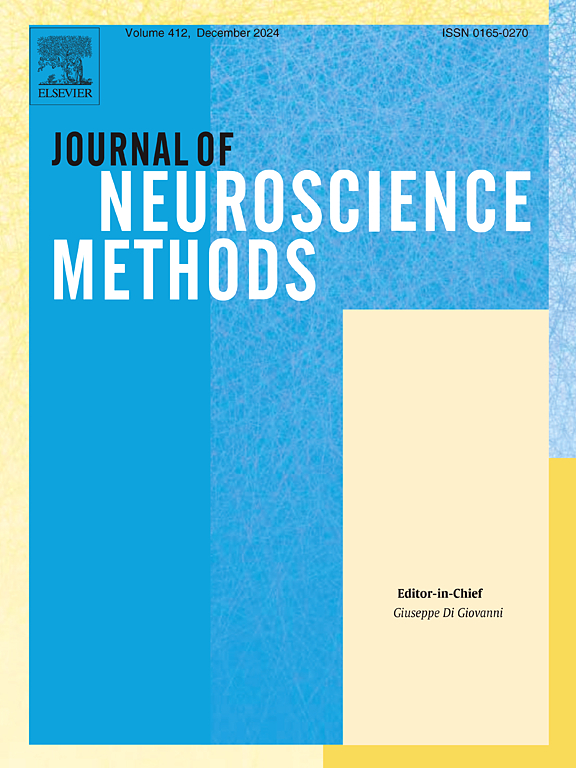Localization of neurons from extracellular footprints
IF 2.7
4区 医学
Q2 BIOCHEMICAL RESEARCH METHODS
引用次数: 0
Abstract
Background:
High density microelectrode arrays (HD-MEAs) are now widely used for both in-vitro and in-vivo recordings, as they allow spikes from hundreds of neurons to be recorded simultaneously. Since extracellular recordings do not allow visualization of the recorded neurons, algorithms are needed to estimate their physical positions, especially to track their movements when the are drifting away from recording devices.
New Method:
The objective of this study was to evaluate the performance of multiple algorithms for neuron localization solely from extracellular traces (MEA recordings), either artificial or obtained from mouse retina. The algorithms compared included center-of-mass, monopolar, and grid-based algorithms. The first method is a barycenter calculation. The second algorithm infers the position of the cell using triangulation with the assumption that the neuron behaves as a monopole. Finally, grid-based methods rely on comparing the recorded spike with a projection of spikes of hypothetical neurons with different positions.
Results:
The Grid-Based algorithm yielded the most satisfactory outcomes. The center-of-mass exhibited a minimal computational cost, yet its average localization was suboptimal. Monopolar algorithms gave cell localizations with an average error of less than , but they had considerable variability and a high computational cost. For the grid-based method, the variability was smaller, with satisfactory performance and low computational cost.
Comparison with Existing Method(s):
The accuracy of the different localization methods benchmarked in this article had not been properly tested with ground-truth recordings before.
Conclusion:
The objective of this article is to provide guidance to researchers on the selection of optimal methods for localizing neurons based on MEA recordings.
从细胞外足迹定位神经元
背景:高密度微电极阵列(HD-MEAs)可同时记录数百个神经元的尖峰脉冲,因此目前被广泛用于体外和体内记录。由于细胞外记录无法观察到记录的神经元,因此需要算法来估计它们的物理位置,特别是当它们远离记录设备时跟踪它们的运动:本研究的目的是评估多种算法的性能,以评估仅通过细胞外痕迹(MEA 记录)(人工或从小鼠视网膜获得)进行神经元定位的性能。比较的算法包括质量中心算法、单极算法和基于网格的算法。第一种方法是计算质心。第二种算法使用三角测量法推断细胞的位置,假设神经元表现为单极。最后,基于网格的方法依赖于将记录的尖峰与具有不同位置的假定神经元的尖峰投影进行比较:基于网格的算法取得了最令人满意的结果。质量中心算法的计算成本最低,但其平均定位效果并不理想。单极算法的细胞定位平均误差小于 10μm,但它们具有相当大的变异性和较高的计算成本。与现有方法的比较:与现有方法的比较:本文基准测试的不同定位方法的准确性以前没有用地面实况记录进行过适当的测试:本文旨在为研究人员选择基于 MEA 记录的神经元定位最佳方法提供指导。
本文章由计算机程序翻译,如有差异,请以英文原文为准。
求助全文
约1分钟内获得全文
求助全文
来源期刊

Journal of Neuroscience Methods
医学-神经科学
CiteScore
7.10
自引率
3.30%
发文量
226
审稿时长
52 days
期刊介绍:
The Journal of Neuroscience Methods publishes papers that describe new methods that are specifically for neuroscience research conducted in invertebrates, vertebrates or in man. Major methodological improvements or important refinements of established neuroscience methods are also considered for publication. The Journal''s Scope includes all aspects of contemporary neuroscience research, including anatomical, behavioural, biochemical, cellular, computational, molecular, invasive and non-invasive imaging, optogenetic, and physiological research investigations.
 求助内容:
求助内容: 应助结果提醒方式:
应助结果提醒方式:


